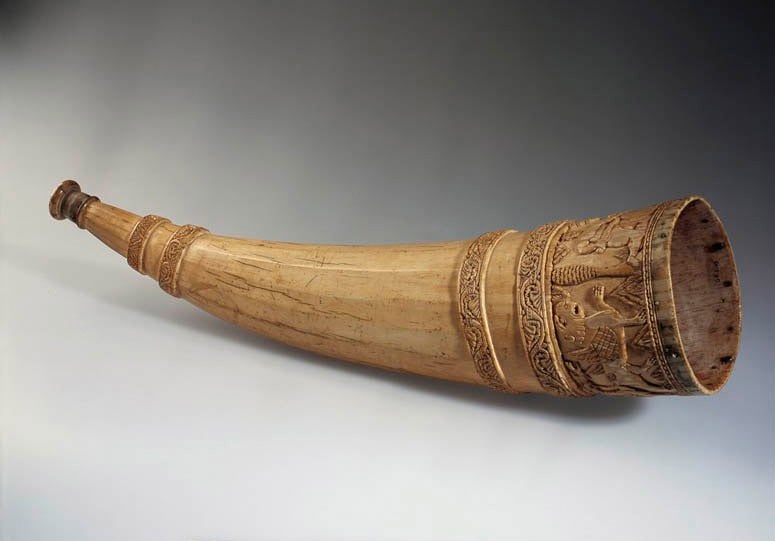Opinion
An Eastern Horn That Spoke to Europe’s Medieval Christians
THE DAILY PIC: In the Met 'Jerusalem' show, a hunting horn from the Middle East once held Christian relics.

THE DAILY PIC: In the Met 'Jerusalem' show, a hunting horn from the Middle East once held Christian relics.

Blake Gopnik

THE DAILY PIC (#1657): This kind of elephant-tusk hunting horn is called an olifant, and the 12th-century one in this image is from the museum of fine arts in Angers in France. Curators there have lent it to the important exhibition called “Jerusalem 1000–1400: Every People Under Heaven,” which recently opened at the Metropolitan Museum in New York. The horn was crafted in the Holy Land and was brought back to France by the crusader bishop of Angers, where for centuries it sat stuffed full of Christian relics.
The imagery of its carvings is Middle Eastern and secular: There’s a child on a camel and various scenes from some kind of mythical lion hunt. The fact that this kind of imagery seemed perfectly suited to go with Christian sacred objects got me thinking about Christianity and the exotic.
Today, even an atheist of Jewish extraction can feel that the Christian religion is part of the deep and natural culture of the European West. But I wonder if Europe in the middle ages still retained some hint of the Roman sense that Christianity was exotic and foreign and eastern – an import rather than a native product. After all, as the Met show makes clear, all medieval Christians knew that the religion’s heart and origins lay in far-off Jerusalem – they committed all kinds of horrors and sins to conquer that ancient seat.
The goods they sent home may have felt all the more Christian for having an odor of eastern foreignness. Is that what gave the pointed, “Arab” arch of Gothic architecture so much appeal when it hit Europe?
Is it just possible that the Islamophobia expressed by some Christians today is a classic case of the return of the repressed?
For a full survey of past Daily Pics visit blakegopnik.com/archive.